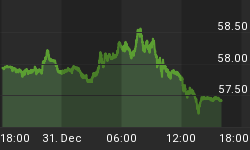For the first time since we’ve been keeping track, two separate Category 4 hurricanes struck the mainland U.S. in the same year. It should come as no surprise, then, that the combined recovery cost of Hurricanes Harvey and Irma is expected to set a new all-time high for natural disasters. AccuWeather estimates the total economic impact to top out at a whopping $290 billion, or 1.5 percent of national GDP.
With parts of Southeast Texas, Louisiana and Florida seeing significant damage, many fixed-income investors might be wondering about credit risk and local municipal bond issuers’ ability to pay interest on time. If school districts, hospitals, highway authorities and other issuers must pay for repairs, how can they afford to service their bondholders?
It’s a reasonable concern, one that nearly always arises in the days following a major catastrophe. But the concern might be unwarranted, if the past is any indication.
Lessons from Hurricane Katrina
According to credit ratings firm Moody’s Investors Service, natural disasters have not been the cause of a single default in U.S. muni bond history. Even Hurricane Katrina, responsible for a then-unprecedented $120 billion in damages, wasn’t enough to cause New Orleans to renege on its debt obligations.
The reason for this is that the affected areas normally receive substantial disaster relief from both the federal and state governments. Congress appropriated tens of billions of dollars in aid following Hurricanes Katrina and Sandy, and this year it’s already approved an initial payment of $7.85 billion. Combined with flood insurance proceeds, this has often been enough to keep municipalities solvent and day-to-day operations running.
“FEMA aid (often 75 percent or more of disaster-related costs) and flood insurance can go a long way in mitigating financial strain in the medium term,” wrote Lindsay Wilhelm, senior vice president of municipal credit research at Raymond James, in a note last week.
Texas and Florida Have Investment-Grade Credit Ratings
It’s also important to keep in mind the sheer size of Houston’s economy and its impeccable credit-worthiness. As I shared with you in a previous Frank Talk, the Texas city had a gross domestic product (GDP) of roughly $503 billion as of 2015, which is equivalent to the size of Sweden’s economy. This puts Houston, the fourth-largest city in the U.S., in a better position to handle a hurricane’s devastating aftermath than New Orleans, which had a GDP of between $69 billion and $72 billion at the time of Hurricane Katrina, according to the Federal Reserve Bank of Atlanta.
The 18 Texas counties that the Federal Emergency Management Agency (FEMA) declared a disaster all have strong, investment-grade credit ratings from Moody’s and/or Standard & Poor’s. Highest among them is Harris County, where Houston is located, which currently has the highest-possible ratings of Aaa from Moody’s and AAA from S&P. This allows it to issue debt relatively easily, which it will likely need to do more of in the years and possibly decades to come.
In addition, the State of Texas has the highest ratings possible from both firms, while Florida has a rating of Aa1 from Moody’s and AAA from S&P.
It’s too early to tell if we’ll see any credit downgrades in the wake of Harvey and Irma, but for now, I don’t expect any major changes.
Munis an Important Part of Your Portfolio
The $3.8 trillion muni market remains one of the most dependable ways U.S. cities, counties and states finance infrastructure development, and since 1913, muni investors have enjoyed tax-free income at the federal and often state level.
This becomes increasingly more desirable as you reach retirement-age and beyond. Munis might not be as sexy as tech stocks, but they have a long-standing history of performing well in volatile times, especially when those munis are investment-grade and shorter-duration.
By Frank Holmes
















